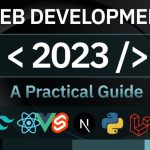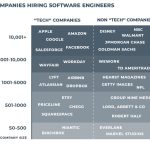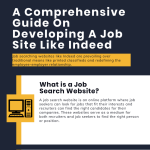Unveiling The Game-changing Web Development 2023 Trends: Stay Ahead With The Ultimate CTA!
Web Development 2023 Trends
Introduction
Dear Readers,
1 Picture Gallery: Unveiling The Game-changing Web Development 2023 Trends: Stay Ahead With The Ultimate CTA!

Welcome to an insightful article that explores the web development trends expected to dominate the industry in 2023. As technology continues to evolve, the world of web development is constantly changing, and staying ahead of these trends is crucial for businesses and developers alike. In this article, we will discuss the key trends that are expected to shape the web development landscape in 2023 and provide valuable insights for our readers. So, let’s dive in and explore the exciting future of web development!
The Table of Web Development 2023 Trends
Trend
Description

Image Source: influencermarketinghub.com
Progressive Web Apps (PWAs)
Progressive Web Apps combine the best of web and mobile applications, offering users a seamless experience across devices.
Artificial Intelligence (AI) and Machine Learning (ML)
AI and ML technologies are set to revolutionize web development by enhancing user experience, personalization, and automation.
Chatbots and Virtual Assistants
Chatbots and virtual assistants are becoming increasingly popular and are expected to play a significant role in enhancing customer support and engagement.
Responsive Web Design
Responsive web design ensures that websites adapt seamlessly to different screen sizes and devices, providing an optimal viewing experience for users.
Single-Page Applications (SPAs)
SPAs offer a smooth and interactive user experience by dynamically updating the content without the need for page reloads.
Internet of Things (IoT)
IoT integration with web development allows for the seamless connectivity of devices and opens up new possibilities for user interaction.
What are Web Development 2023 Trends?
The web development trends of 2023 are advancements and shifts in technology that are expected to shape the way websites and web applications are built and experienced. These trends encompass various aspects of web development, including design, functionality, and user experience.
Web development trends provide insights into the direction the industry is heading and help developers and businesses stay competitive in the ever-changing digital landscape.
Here are some of the key web development trends that are expected to make an impact in 2023:
Progressive Web Apps (PWAs) 🌟
Artificial Intelligence (AI) and Machine Learning (ML) 🎮
Chatbots and Virtual Assistants 💬
Responsive Web Design 💻
Single-Page Applications (SPAs) 📷
Internet of Things (IoT) 📺
Progressive Web Apps (PWAs) 🌟
Progressive Web Apps combine the best of web and mobile applications, offering users a seamless experience across devices. PWAs are built using web technologies such as HTML, CSS, and JavaScript and can be accessed through a web browser or installed on a user’s device like a native app.
One of the key advantages of PWAs is their ability to work offline or with limited connectivity, thanks to service workers. This feature allows users to access the app even in areas with poor network coverage. Additionally, PWAs are highly responsive, fast, and provide a native-like experience to users.
By leveraging the power of PWAs, businesses can enhance user engagement, increase conversions, and improve overall user satisfaction.
Artificial Intelligence (AI) and Machine Learning (ML) 🎮
Artificial Intelligence and Machine Learning technologies are set to revolutionize web development in 2023. By integrating AI and ML algorithms into websites and web applications, developers can enhance user experience, personalize content, and automate various tasks.
AI-powered chatbots, for example, can provide instant customer support and improve user engagement by understanding and responding to user queries. Machine Learning algorithms can analyze user behavior and preferences, enabling websites to offer personalized recommendations and content.
As AI and ML continue to evolve, web developers should stay updated with the latest advancements in these technologies to leverage their potential and deliver exceptional user experiences.
Chatbots and Virtual Assistants 💬
Chatbots and virtual assistants are becoming increasingly popular in the web development industry. These AI-powered tools can interact with users, answer queries, provide recommendations, and assist with various tasks, such as booking appointments or making purchases.
Chatbots and virtual assistants offer businesses a cost-effective solution for delivering round-the-clock customer support and engagement. They can handle repetitive tasks, free up human resources, and provide instant responses to user queries, enhancing overall customer satisfaction.
Integrating chatbots and virtual assistants into websites and web applications can significantly improve user experiences and drive business growth.
Responsive Web Design 💻
Responsive web design is a crucial trend that ensures websites adapt seamlessly to different screen sizes and devices. With the increasing use of mobile devices, it is essential for websites to provide an optimal viewing experience and functionality across various platforms.
Responsive web design uses fluid grid systems, flexible images, and CSS media queries to adjust the layout and design based on the user’s device. This approach eliminates the need for separate mobile and desktop versions of a website and ensures consistency and usability across all platforms.
By embracing responsive web design, businesses can reach a wider audience, improve search engine rankings, and deliver a consistent brand experience.
Single-Page Applications (SPAs) 📷
Single-Page Applications (SPAs) offer a smooth and interactive user experience by dynamically updating the content without the need for page reloads. SPAs are built using JavaScript frameworks like React, Angular, or Vue.js and are known for their speed and responsiveness.
SPAs provide a seamless browsing experience by loading only the necessary content, resulting in faster load times and reduced server requests. They allow for smooth transitions between sections, making navigation intuitive and engaging for users.
With their ability to deliver dynamic and highly interactive experiences, SPAs are expected to gain more traction in 2023 and become a popular choice for web development projects.
Internet of Things (IoT) 📺
The Internet of Things (IoT) is a network of interconnected devices that communicate and share data with each other. The integration of IoT with web development opens up new possibilities for user interaction and connectivity.
IoT-enabled websites and applications can interact with smart devices, such as wearables, home automation systems, and connected appliances. This integration allows for personalized experiences and seamless control of IoT devices through web interfaces.
As IoT continues to expand, web developers need to consider the security and privacy implications of connecting devices to the internet and ensure a smooth and secure user experience.
Advantages and Disadvantages of Web Development 2023 Trends
While web development trends bring exciting opportunities, it is essential to consider their advantages and disadvantages before implementing them in projects. Let’s explore the pros and cons of the key trends discussed above:
Progressive Web Apps (PWAs)
Advantages:
Enhanced user experience across devices.
Offline functionality for uninterrupted access.
Improved performance and loading times.
Disadvantages:
Limited support on older browsers.
Increased development complexity.
May require additional resources for maintenance.
Artificial Intelligence (AI) and Machine Learning (ML)
Advantages:
Personalized user experiences and recommendations.
Efficient automation of tasks and processes.
Improved customer support and engagement.
Disadvantages:
Complex implementation and integration.
Data privacy and security concerns.
Potential bias in AI algorithms.
Chatbots and Virtual Assistants
Advantages:
24/7 customer support and engagement.
Cost-effective solution for handling repetitive tasks.
Instant responses to user queries.
Disadvantages:
Limited ability to handle complex queries.
Difficulty in achieving natural language understanding.
User preference for human interaction in certain cases.
Responsive Web Design
Advantages:
Consistent user experience across devices.
Improved search engine optimization (SEO).
Cost-effective maintenance for multi-platform compatibility.
Disadvantages:
Potential design and layout limitations.
Increased development complexity.
Requires thorough testing across multiple devices.
Single-Page Applications (SPAs)
Advantages:
Fast and responsive user experience.
Smooth transitions and intuitive navigation.
Reduced server requests and faster load times.
Disadvantages:
Heavier initial load due to larger JavaScript bundles.
SEO challenges with dynamic content loading.
Browser compatibility issues with older versions.
Internet of Things (IoT)
Advantages:
Enhanced user control and connectivity.
Personalized experiences through IoT integration.
Access to real-time data and insights.
Disadvantages:
Security and privacy concerns.
Compatibility issues with diverse IoT devices.
Increased complexity in development and maintenance.
Frequently Asked Questions (FAQ)
1. What are the key challenges in implementing Progressive Web Apps?
Implementing Progressive Web Apps can be challenging due to limited support on older browsers and the increased complexity of development. Additionally, maintaining PWAs may require additional resources and expertise.
2. How can businesses leverage Artificial Intelligence in web development?
Businesses can leverage Artificial Intelligence in web development by integrating AI algorithms for personalized user experiences, efficient automation of tasks, and improved customer support and engagement.
3. What are the advantages of using Chatbots and Virtual Assistants?
The advantages of using Chatbots and Virtual Assistants include 24/7 customer support and engagement, cost-effective handling of repetitive tasks, and instant responses to user queries.
4. Is Responsive Web Design suitable for all types of websites?
Responsive Web Design is suitable for most websites as it ensures consistent user experiences across devices and improves search engine optimization. However, certain complex web applications may require alternative approaches.
5. How can Single-Page Applications enhance user experiences?
Single-Page Applications enhance user experiences by providing fast and responsive interactions, smooth transitions, and reduced loading times. They offer a more intuitive and engaging navigation experience.
Conclusion
In conclusion, the web development trends expected to dominate in 2023 offer exciting opportunities for businesses and developers. Progressive Web Apps, Artificial Intelligence and Machine Learning, Chatbots and Virtual Assistants, Responsive Web Design, Single-Page Applications, and IoT integration are set to revolutionize the industry.
By embracing these trends, businesses can provide enhanced user experiences, improve customer engagement, and stay ahead of the competition. However, it is essential to carefully consider the advantages and disadvantages of each trend before implementation.
As the web development landscape continues to evolve, it is crucial for developers to stay updated with the latest technologies and trends to deliver exceptional web experiences in 2023 and beyond.
Final Remarks
Dear Readers,
Thank you for taking the time to read our comprehensive article on web development 2023 trends. We hope that you have gained valuable insights into the key trends shaping the industry and their advantages and disadvantages.
As technology continues to evolve, it is crucial to stay ahead of the curve and embrace these
This post topic: Programming



